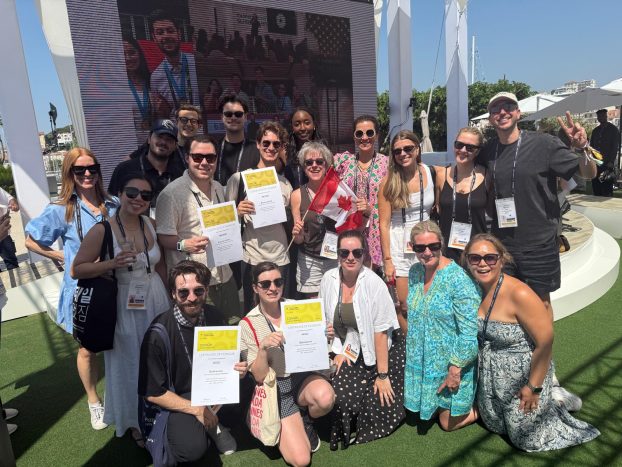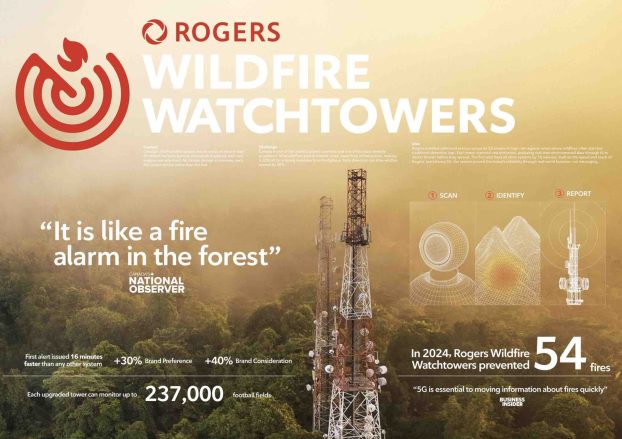There is a hidden flaw in the business of making ads, as there is in most human pursuits, which can be stated in six one-syllable words: YOU’RE TOO DAMN CLOSE TO IT.
Because we slave so many hours over advertising, we come to think that advertising is important. We lose our perspective and our objectivity. We worry insignificant details to death. I once heard a TV producer fight like a rottweiler for an expensive prop which would be on the outside of the set, completely invisible to the camera. Why? "Because the performers will know it’s there!" The client told him to go perform an anatomically impossible act. The client was right.
Just look at our awards ceremonies. We take them so dreadfully seriously. We dress in black-tie finery, mimicking the Oscars or the Tonys, and we offer stilted presentation dialogue to match. We really should remember, there’s a difference between us and Hollywood. Millions of people pay to see the work honoured by the Oscars. When our work comes on, millions of people leave the room.
In creative departments, it’s usually the client who is seen as too close to it. "He wanted a picture of the #*@$%# factory! Nobody cares about the factory!" Or "They spent six years and $20 million discovering Secret Ingredient X-25, so they made us put the damn stuff in the headline!"
Unfortunately, creative people can get too close to it, too – even though we’re the ones who are supposed to have the pulse of the public in our hot little hands. As Exhibit A, I present the new Nestlé’s Kit Kat outdoor campaign.
I have spent the last two weeks trying to figure out these ubiquitous white-on-red collections of long words. I think I have finally done it. If I’m right, the presentation must have gone something like this:
"Kit Kat is a candy bar being positioned as a welcome and tasty break from the daily routine. In fact, our theme line says that loud and clear, ‘Have a break.’
"Now. In today’s world, there are many slightly irritating, maybe faddish things which people want a break from. They include chic coffee bars, trendy aerobic exercising, daytime talk shows, the Internet, cosmetic plastic surgery and taxes.
"What we shall do is this. We shall present our Kit Kat bar as the perfect antidote to, the perfect break from, these everyday irritations. And in doing so, we shall send up the jargon associated with these little life segments.
"It will be smashing."
Unfortunately, when the billboards got plastered all over Toronto, they should have had the agency account person standing in front of them with a bullhorn, explaining all of the above to drivers-by. Without that, they’re incomprehensible. They say things like:
GIVE US A FAT-FREE-LOW-FOAM DOUBLE-DECAF BREAKACCINO.
GIVE US A NIP-TUCKED COLLAGEN IMPLANT BREAKOSUCTION.
GIVE US A BOX T4 LINE 421 GROSS DEDUCTION BREAK.
Et cetera ad infinitum no capeesh.
They might have looked good in the boardroom, but in real life these jabberwocky words are directed at harried, ad-unfriendly drivers, most of whom are late for a meeting and talking on a cell phone. There is nothing on the board, except the product name, which even indicates that they are selling a candy bar. The generic selling point – "break" – is buried in the middle of a newly coined word like breakaccino, which would be tough to read on a quiet day in a public library.
The prospect is being asked to work as hard to understand it as the agency did to create and sell it. One man’s viewpoint is, it ain’t gonna happen.
Give me a sesquipedalian egocentric ain’t-we-clever breakomyopia.
John Burghardt’s checkered resume includes the presidency of a national agency, several films for the Shah’s government in Iran, collaboration with Jim Henson to create the Cookie Monster, and a Cannes Gold Lion. The letterhead of his thriving business now reads "STRATEGIC PLANNING * CREATIVE THINKING". He can be reached by phone at (416) 693-5072, by fax at (416) 693-5100 or by e-mail at burgwarp@aol.com




























